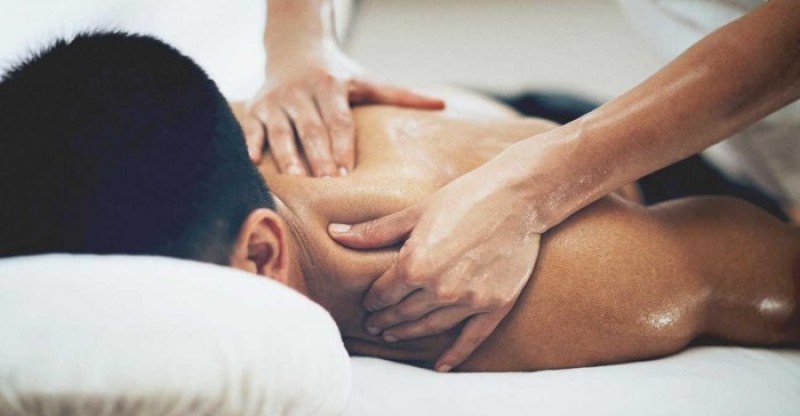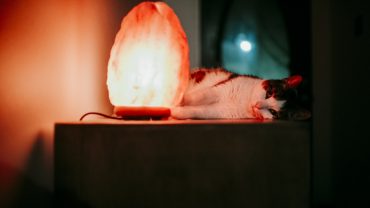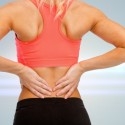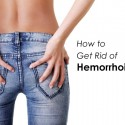15 Home Remedies for Muscle Spasms
Muscle cramps are an issue that affects people of all ages and lifestyles.
Also known as muscle spasms, cramps cause intense pain that can last as long as 15 minutes.
While there’s no need for immediate medical care, there are some things you can do at home to alleviate pain.
Here is a collection of home remedies for leg cramps and muscle spasms.
Make sure to take a good look at every home remedy, as multiple methods can be combined both to provide quick relief and to prevent potential cramps from occurring in the future.
What are Muscle Spasms?
Spasms are sudden and involuntary contractions of a single or group of muscles within your body.
The nerve signals that control your muscles malfunction, resulting in unexpected movement.
The muscles will tighten up, even if you’re not trying to exercise them.
In most cases, spasms are centralized in one location.
They can occur anywhere in the body, from your neck down to your ankle.
However, most people will experience the issue in the feet, lower back, and hamstrings.
One of the most painful types of muscle spasms happens in the calves.
Typically called a Charley horse, these types of spasms can stop you in your tracks and prevent you from walking comfortably.
The result of these unexpected muscle movements is sharp pain.
Depending on the location, you may even be able to see the muscles moving rapidly underneath the skin.
In more intense spasms, you may notice a mass of hardened tissue developing.
This typically subsides over time, after the spasm has stopped.
Other symptoms you may experience include inflammation of the skin and muscle, as well as lasting soreness.
Spasms are more prevalent in athletes. Over 75% of athletes will experience cramps at some point in their life.
You’re also more susceptible to the problem as you get older.
With every passing year, you’ll lose muscle mass.
As a result, the muscles that remain will have to work harder to support your body.
That said, there’s no age group that’s completely immune to spasms.
The Difference between Muscle Spasms and Pulled Muscles
Pulled muscles and spasms can feel very similar at first.
However, they’re significantly different in terms of seriousness and cause.
While spasms usually don’t last very long, pulled muscles can require considerable treatment and healing time.
Pulled muscles happen because the muscles are strained, gradually inflame over time, or experience sudden movements they’re not used to.
There are two types of pulled muscle injuries to be aware of.
Acute muscle pulls are caused by sudden injuries.
You may experience the issue if you’ve unexpectedly twisted your ankle, used your arm to lift something heavy or put too much strain on your lower back muscles.
Acute injuries tend to have a shorter recovery time. Overuse muscle pulls are the second classification.
They develop over time and need significant care to recover from.
They’re often caused by a buildup of inflammation that occurs because the muscle tissue doesn’t have enough time to recover adequately before being used again.
Within overuse muscle pulls, there are two types of injuries.
Tendonitis refers to the inflammation of the tissue that connects the muscle to the bone, while bursitis refers to the inflammation of fluid-filled pockets that protect the joints.
If you’re trying to determine whether you’re suffering from a pulled muscle or a standard cramp, consider the circumstances of the injury and pay close attention to the affected area.
Signs of a pulled muscle include significant swelling, a noticeable popping sound, and pain when you try to move.
Stretch and gently massage the affected area. If the pain subsides, it’s likely a cramp.
However, lasting pain after you stretch the area can indicate that you’ve pulled the muscle.
Pulled muscles don’t relax with stretching.
In fact, stretching can worsen the issue, so it’s important to seek medical care.
What Causes Muscle Spasms?
Muscle spasms can be caused by a number of factors.
Most commonly, it’s because the muscle is being overused.
Inadequate preparation before vigorous exercise can cause your muscles to fatigue quickly.
Even staying in one spot for prolonged periods of time can cause fatigue.
For women, abdominal cramps can occur because of intense uterine muscle contractions during the menstrual cycle.
In some cases, spasms may be caused by direct damage to the nerves that control your muscles.
Poor posture and injuries in your spine can compress the nerves, resulting in a scrambled signal to your muscles.
Beyond physical activity, spasms can occur because of internal issues.
Certain diets, medical conditions, and lifestyle choices can affect your muscular health.
The most common issues that trigger spasms are a lack of electrolytes and poor circulation.
Muscles need key electrolytes and minerals to contract and relax.
A poor diet and certain medications can cause electrolyte levels to fall.
Electrolytes are delivered to the muscles through your blood, so poor circulation can also be a factor.
Issues within your arteries can prevent the electrolytes and oxygen from reaching your muscles.
Because your legs are relatively far from the heart, muscles in that area are often affected first.
Dehydration is another cause of spasms.
If you’re not drinking enough water or you’re taking a diuretic, the muscles may not have the fluids they need to stay healthy.
Dehydration actually causes fluid to be drawn out of the muscles.
Your body will take that fluid away to ensure that certain organs have what they need to keep you alive.
When there’s not enough fluid, the nerves that control your muscles aren’t able to function properly.
Certain types of medical conditions can also cause dehydration by affecting fluid levels throughout your body.
These include diabetes, liver disease, thyroid disorders, and much more.
Most of the common causes of muscle cramps can be treated.
In most cases, cramps can be treated and prevented by making simple lifestyle changes, and taking extra precautions, prior to the intense physical activity.
Here are 15 at-home remedies you can use to get muscle cramp relief.
Natural Remedies for Muscle Spasms
Stretch Before and After Exercise
Intense exercise without a proper warmup is what primarily causes leg cramps in athletes.
Your muscles can become fatigued more quickly, and experience inflammation.
A proper warm-up will ensure that the muscle fibers are flexible and ready for the activity ahead.
Start the warming-up process 10-15 minutes before you exercise.
You should start slow, gradually working your way up.
It’s a good idea to do a bit of cardio to increase the heart rate.
Then, stretch the particular muscles you’ll be working by performing the motions slowly.
Slow and powerful movements can help to increase blood flow to your muscles.
When you’re done working out, stretch out your muscles again.
This helps to improve your blood circulation even further so that your muscles have the fuel to recover quickly.
Give special attention to your quadriceps and hamstrings.
Sit down on the ground with your feet extended in front of you.
Then, pull the tops of your feet toward you. Hold this position for 20-30 seconds.
You should spend at least 10 minutes stretching after any intense physical activity.
Massage the Affected Area
When a spasm occurs, you can massage the affected area to relieve the pain.
Use long strokes of your hands and fingers to apply slight pressure.
You can also stretch the muscle slowly.
Alternatively, use your thumbs, the palm of your hands, or a closed fist to press onto the center of the muscle spasms.
Hold this position for 10 seconds before you release. If the spasm continues, repeat the process.
You may feel some discomfort or resistance at first, but the sensation will subside after a few minutes of working the area.
This method helps to calm the muscle down so that it stops contracting and relaxes.
A massage oil can also be used to reduce friction on the skin and add further benefits.
A simple mixture made of wintergreen and vegetable oils can be used.
The wintergreen contains an organic ester that can help to increase blood flow in the area.
Drink Plenty of Water
Drinking water can help to ensure that your body has enough fluids available.
It will help you avoid dehydration, which often results in muscle pain.
At the very least, you should be drinking 64 ounces of water each day.
However, this number will vary depending on your lifestyle.
If you’re an active person, you’ll want to increase this amount.
It’s important to supplement your water intake if you’re exercising outdoors and sweating.
Either way, more water is usually better.
You should also cut back on your consumption of alcohol, coffee, and carbonated drinks.
While they’re fine in moderation, they can exacerbate dehydration problems.
Alcoholic drinks decrease your body’s production of an antidiuretic hormone.
As a result, you’ll urinate more frequently, and your body won’t be able to reabsorb water.
Stick to water as much as you can.
Use Epsom Salt
Epsom salt can be used to ease the stress on your muscles, allowing you to relax and recover.
It contains high concentrations of magnesium, which is an essential electrolyte that helps your muscles function properly.
Epsom salt can be used to alleviate pain by relaxing the muscles and detoxifying the body.
It’s also great for dealing with magnesium deficiencies.
One of the best muscle cramp treatment methods is an Epsom salt bath.
Simply fill up your bathtub with warm water and add two cups of Epson salt.
Stir the bath until the salt has completely dissolved. Soak in the bath water for at least 20 minutes.
During that time, the salt will absorb through your skin to reach your muscles and provide relief.
The warmth of the water will also help to treat soreness.
It’s important that you don’t consume the salt.
If you have diabetes, high blood pressure, or a serious heart condition, you may want to avoid taking the salt bath as well.
Utilize Heat
Heat treatments can help to reduce pain from spasms.
They do this by increasing your blood flow throughout the body.
Your muscles will receive more nutrients and oxygen. They also stimulate receptors on the skin.
Nerve transmissions to your brain will decrease, making you feel less pain.
You can apply heat a few different ways. The easiest way is to take a hot shower or bath.
The warm water over your body will help your muscles relax.
Alternatively, you can use a heating pad.
Heating pads contain an element that’s covered in a soft fabric.
The even heat will transfer to your muscles safely. You can achieve the same effect with a warm towel.
Just soak a towel in hot water and wrap the affected area.
Leave the towel on the area until it comes down to room temperature. You can repeat the process as much as you need to feel relief.
Apply a Cold Compress
A cold compress should be used after you’ve applied heat and the bulk of the pain has subsided.
The cool temperature will help to provide complete relief by numbing the remaining pain and preventing soreness.
It does this by constricting the blood vessels and reducing inflammation.
It’s important that you apply a cold compress after you’ve applied heat.
Doing it before may reduce blood flow, and thus prevent oxygen from reaching the muscles effectively.
To create a cold compress, place ice cubes in a soft towel. Wrap it up to create a ball that can be placed on your muscles.
It’s good to use a thin towel to ensure that the cold transfers properly.
Leave the compress on the muscle for approximately 15 minutes. If pain continues, repeat the process a few hours later.
Don’t reapply new ice immediately afterward, as it can damage your skin.
Exercise Regularly
Staying active and healthy can help you avoid potential cramps in the future.
What causes leg cramps as you get older is a lack of muscle mass. Muscle mass decreases slowly over time.
The more mass you lose, the more work your remaining muscles need to do to keep up with your body weight and activity.
By staying physically fit, you’re making up for that natural loss in muscle mass.
Regular exercise can help you maintain your muscles throughout your life.
You should be performing a combination of cardiovascular and strength exercises.
Aerobic exercises like running or cycling can help to keep your body fat percentage low while improving circulation throughout your body.
Strength training can help you develop new muscles to counteract natural loss.
Work on Your Posture
The position of your body as you stand and move can have a big effect on your susceptibility to muscle spasms.
Bad posture develops over time to the point that it becomes second nature.
Unfortunately, it often results in cramps in the neck, lower back, and legs.
A curve in your spine can also compress your nerves and lead to overall stiffness.
If you’ve ever experienced pain after staying in a single position for a while, it’s likely due to muscle strain and nerve issues caused by your posture.
While it can be difficult to change your posture, there are ways to accomplish this task over time.
Numerous exercises can realign your skeletal system to help you see results.
Even something as simple as an ergonomic chair can dramatically reduce your chances of experiencing painful spasms.
Consume More Vitamins
A healthy dose of vitamins can help you prevent cramps throughout the day.
Vitamins are important for many different biological processes. Vitamin B can help to improve the function of the nerves and muscles.
It can also increase production of red blood cells, which deliver oxygen to the muscles.
Vitamin E can help to improve blood flow through the arteries and has been known to help prevent cramps at night.
Vitamin D is essential for overall bone and muscle health.
Consuming these vitamins can keep you protected from cramps.
They can be taken in via a supplement that comes in the form of a pill.
Alternatively, you can increase your consumption by making a few changes to your diet.
Vitamin E is found in foods like liver, salmon, potatoes, and soybeans.
Vitamin B is found in meats, fish, and a variety of grains. Vitamin D is found in orange juice, egg yolks, and tuna.
Increase Your Intake of Electrolytes
Electrolytes are vital nutrients that help muscles function properly.
One of the best ways to get muscle cramp relief is to increase your consumption of nutrient-rich foods.
By improving your diet, you can avoid a deficiency.
The electrolytes you’ll want to pay attention to the most include calcium, potassium, and magnesium.
Potassium issues are one of the most common causes of leg cramps throughout the night.
Potassium can be found in fruits like bananas and oranges.
Calcium can be found in milk and many leafy greens.
Foods rich in magnesium include whole grains, nuts, and beans.
If you can’t increase your intake through your natural diet, you can do so through supplements.
Ideally, you should be consuming upwards of 4,700 milligrams of potassium, up to 420 milligrams of magnesium, and as much as 2,000 milligrams of calcium each day to stay healthy.
Drink Apple Cider Vinegar
Apple cider vinegar can be used as a quick muscle cramp treatment and preventative measure.
Raw and unfiltered apple cider vinegar has a high concentration of potassium.
Consuming it can help to relax the muscles and reduce pain.
Not only that, but it also contains many nutrients that help you retain fluids and avoid dehydration.
To consume it, you can create a simple drink. Add one tablespoon of apple cider vinegar to eight ounces of warm water.
It’s recommended that you drink this mixture once a day to keep yourself protected from future cramps.
If you suffer from nocturnal cramps, you can create a drink that introduces calcium.
Mix one teaspoon of apple cider vinegar, one teaspoon of honey, and one tablespoon of calcium lactate to four ounces of warm water.
Regular consumption will help to prevent jarring spasms as you sleep.
It should be consumed at least 30 minutes before you go to bed.
Utilize Anti-Inflammatory Foods
Many foods contain natural anti-inflammatory properties.
They can help to reduce swelling and help to relax your muscles during a spasm.
After your muscles are relaxed, they’ll help to prevent any lasting soreness.
To take advantage of their properties, you can consume these foods or use them topically.
One anti-inflammatory food is clove oil. It also has anesthetic properties to get rid of pain fast.
You can use it as a massage oil over the affected muscle. Simply warm the oil up and use your hands to apply slight pressure.
Rosemary and Chamomile tea work to keep swelling down.
They act as relaxants to provide relief over time.
You can use these foods to create a warm tea as immediate home remedies for leg cramps, and daily as a preventative tool.
Change Your Sleeping Position
It’s not uncommon for nocturnal leg cramps to occur because of poor sleeping position.
The feet need to be in a comfortable and natural position to ensure that the muscles aren’t overworked as you sleep.
Pointed toes or feet pulled toward you are common issues. To avoid them, make sure that your sheets are loose.
Untuck sheets prior to sleeping so that your feet can’t get caught in a compromising position.
It’s also a good idea to avoid sleeping on your side.
Increased weight causes too much pressure on the muscles of your leg.
Consume Acetic Acid
This method has been used by athletes for years.
Acetic acid is responsible for your body’s production of acetylcholine, which is an important neurotransmitter that controls the way muscles contract.
Muscle spasms may be caused by a deficiency in acetylcholine.
By consuming acetic acid in various foods, your production of acetylcholine increases to help you prevent spasms.
It’s found in mustard and pickles. It’s not uncommon to see athletes taking a spoonful of mustard when they experience a cramp.
This can help alleviate pain in a matter of minutes.
Rest between Workouts
The key to preventing cramps and pain is to take care of your body after a workout.
While stretching can help you cool down significantly after physical activity, your body still needs time to heal.
It’s important that you give your muscles ample time to recover.
Typically, muscles can take up to two weeks to recover fully.
That said, that doesn’t mean that you need to relax for the entire two-week period.
You can usually resume working out a day later.
Your muscles will be healed enough to make it through the workout unscathed.
However, this only applies if you perform a regular workout. Intense workouts every single day will cause inflammation and regular spasms.
If you push hard at the gym, take a day off to recover.
Even if you only perform light workouts or cardio, it’s a good idea to take a few days off every week to ensure that your muscles aren’t overworked.
Conclusion
Overall, there’s a lot you can do to treat and avoid the intense pain that comes from unexpected cramps.
Spasms are your body’s response to internal issues.
Whether they’re caused by overworking your muscles, nutrient deficiencies, or dehydration, your body is telling you that you need to do something about it.
By understanding why cramps occur, you have all the information you need to treat them.
Next time you experience a painful cramp, give one of these remedies a try.
They can be used to get the relief quickly that you need and help you prevent future issues from occurring.
FDA Compliance
The information on this website has not been evaluated by the Food & Drug Administration or any other medical body. We do not aim to diagnose, treat, cure or prevent any illness or disease. Information is shared for educational purposes only. You must consult your doctor before acting on any content on this website, especially if you are pregnant, nursing, taking medication, or have a medical condition.
HOW WOULD YOU RATE THIS ARTICLE?





